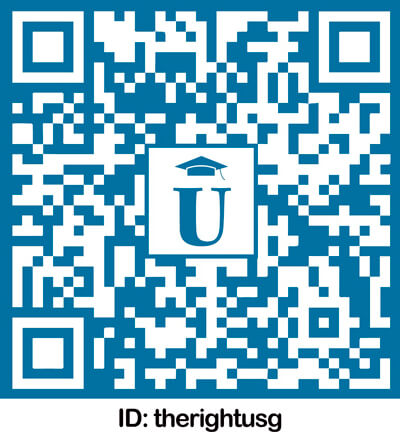fees waived
Maritime Engineering, MEng (Hons), with industry placement
University of Southampton, United Kingdom
Subject ranking
UK / ARWU 2024 4th
UK / THE 2025 11th
UK / QS 2025 13th
Costs
food & rentS$17.2K / year
Entry requirements
Scholarships
21 - 50 available
10 available
Unlimited quantity
Unlimited quantity
Limited quantity
Information
Code
Intakes
Website (External)
Programmes
Information
Duration
2030
Course summary
This course was previously known as MEng Ship Science with Industrial Placement Year.Maritime Engineering includes the design, construction and testing of the vessels and offshore structures that use the ocean for transport, recreation and the harnessing of marine resources. This integrated masters degree covers the theoretical principles of naval architecture and marine engineering alongside practical laboratories, design modules and projects.The first two years are the same for both the BEng and MEng Maritime Engineering, providing you with a thorough understanding of the science and engineering associated with marine vehicles, structures, and their design.At the end of your second year, you can choose to study one of six specialist pathways, or maintain a broad-based degree. The specialist pathways are: Advanced Computational Engineering, Marine Engineering and Autonomy, Naval Architecture, International Naval Architecture, Ocean Energy and Offshore Engineering, or Yacht and High Performance Craft. In your third year you will extend your knowledge through advanced naval architecture modules, and carry out an individual project, bringing together the concepts and skills you have learned.During your fourth year, you will take advanced modules and participate in a group design project, applying your engineering knowledge to solve a real-world problem.Your Industrial Placement Year will enhance your employability, with an additional year-long paid placement in an engineering organisation. You will be able to apply the knowledge and skills that you developed during the early years of your degree, developing vital professional knowledge and skills to prepare you to become a professional engineer after graduation.You will have access to extensive facilities, which include dedicated student design studios and workshops, a 138m towing tank with wave maker, wind tunnel complex and a professional manufacturing centre. Our courses are fully accredited by the Royal Institution of Naval Architects, the Institution of Marine Engineering, Science and Technology, and the Institution of Mechanical Engineers, and offer a route to chartered status.During your fourth year, you will take advanced modules and participate in a group design project, applying your engineering knowledge to solve a real-world problem.Your Industrial Placement Year will enhance your employability, with an additional year-long paid placement in an engineering organisation. You will be able to apply the knowledge and skills that you developed during the early years of your degree, developing vital professional knowledge and skills to prepare you to become a professional engineer after graduation.You will have access to extensive facilities, which include dedicated student design studios and workshops, a 138m towing tank with wave maker, wind tunnel complex and a professional manufacturing centre. Our courses are fully accredited by the Royal Institution of Naval Architects, the Institution of Marine Engineering, Science and Technology, and the Institution of Mechanical Engineers, and offer a route to chartered status. The modules that you take in years three and four will depend whether you have chosen to study a broad-based degree or one of our six pathways. Typical modules for the broad-based degree include:Year one: Basic Naval Architecture; An Introduction to Engineering Design; Electrical and Electronics Systems; Engineering Mathematics Workshop; Mathematics for Engineering and the Environment; Mechanics, Structures and Materials; ThermoFluids.Year two: Engineering Management and Law; Hydrodynamics; Materials and Structures; Mathematics for Engineering and the Environment Part II; Ship Resistance and Propulsion; Ship Design and Economics; Ship Structural Design and Production; Systems Design and Computing for Ships.Year three: Individual Project; Marine Craft Concept Design; Marine Engineering; Marine Hydrodynamics; Marine Structures; Ship Manoeuvring and Control; plus module options.Year four: Group Design Project; Project Risk Management; Marine Safety: Risk, Environment and Law; plus module options to extend your knowledge. Testing is conducted through a combination of unseen written examinations and assessed coursework in the form of problem-solving exercises, laboratory reports, design exercises, essays, and individual and group projects. Experimental, research and design skills are assessed through laboratory reports, coursework exercises and oral presentations.The Industrial Placement Year is assessed via an individual reflective report.Modules
Assessment method
Professional bodies
Professionally accredited courses provide industry-wide recognition of the quality of your qualification.
The modules that you take in years three and four will depend whether you have chosen to study a broad-based degree or one of our six pathways. Typical modules for the broad-based degree include: Year one: Basic Naval Architecture; An Introduction to Engineering Design; Electrical and Electronics Systems; Engineering Mathematics Workshop; Mathematics for Engineering and the Environment; Mechanics, Structures and Materials; ThermoFluids. Year two: Engineering Management and Law; Hydrodynamics; Materials and Structures; Mathematics for Engineering and the Environment Part II; Ship Resistance and Propulsion; Ship Design and Economics; Ship Structural Design and Production; Systems Design and Computing for Ships. Year three: Individual Project; Marine Craft Concept Design; Marine Engineering; Marine Hydrodynamics; Marine Structures; Ship Manoeuvring and Control; plus module options. Year four: Group Design Project; Project Risk Management; Marine Safety: Risk, Environment and Law; plus module options to extend your knowledge.
A local representative of University of Southampton in Singapore is available online to assist you with enquiries about this course.

